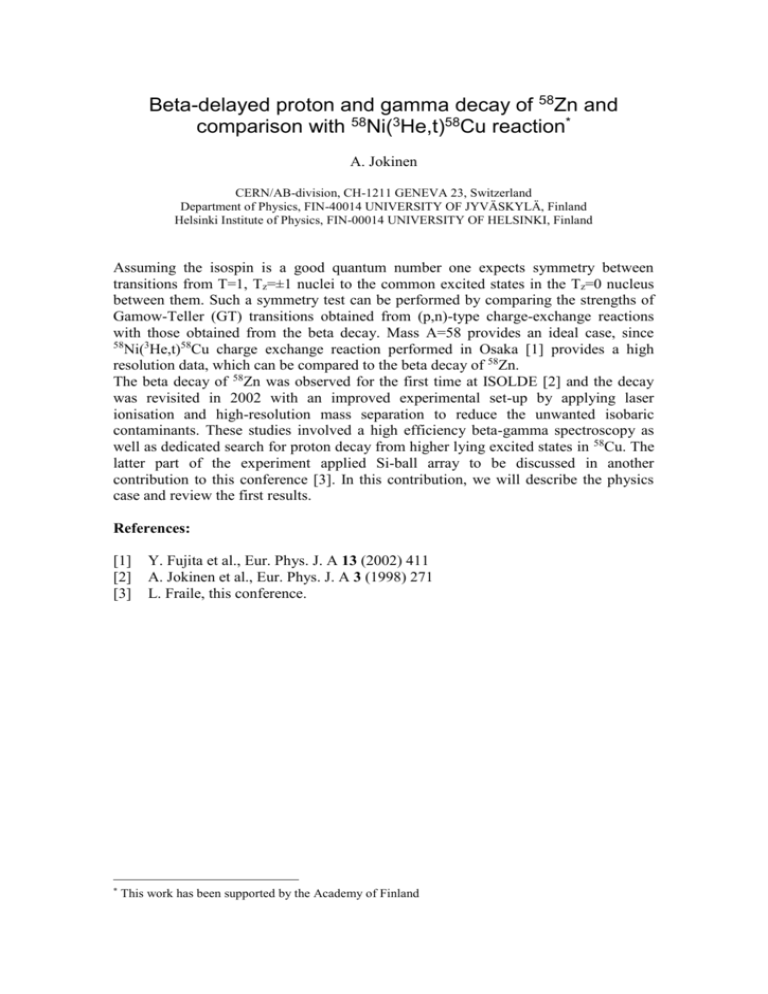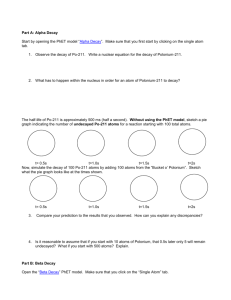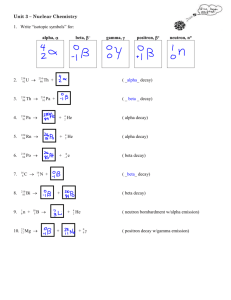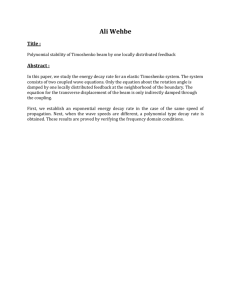Beta-delayed proton and gamma decay of 58Zn and comparison
advertisement

Beta-delayed proton and gamma decay of 58Zn and comparison with 58Ni(3He,t)58Cu reaction* A. Jokinen CERN/AB-division, CH-1211 GENEVA 23, Switzerland Department of Physics, FIN-40014 UNIVERSITY OF JYVÄSKYLÄ, Finland Helsinki Institute of Physics, FIN-00014 UNIVERSITY OF HELSINKI, Finland Assuming the isospin is a good quantum number one expects symmetry between transitions from T=1, Tz=±1 nuclei to the common excited states in the Tz=0 nucleus between them. Such a symmetry test can be performed by comparing the strengths of Gamow-Teller (GT) transitions obtained from (p,n)-type charge-exchange reactions with those obtained from the beta decay. Mass A=58 provides an ideal case, since 58 Ni(3He,t)58Cu charge exchange reaction performed in Osaka [1] provides a high resolution data, which can be compared to the beta decay of 58Zn. The beta decay of 58Zn was observed for the first time at ISOLDE [2] and the decay was revisited in 2002 with an improved experimental set-up by applying laser ionisation and high-resolution mass separation to reduce the unwanted isobaric contaminants. These studies involved a high efficiency beta-gamma spectroscopy as well as dedicated search for proton decay from higher lying excited states in 58Cu. The latter part of the experiment applied Si-ball array to be discussed in another contribution to this conference [3]. In this contribution, we will describe the physics case and review the first results. References: [1] [2] [3] * Y. Fujita et al., Eur. Phys. J. A 13 (2002) 411 A. Jokinen et al., Eur. Phys. J. A 3 (1998) 271 L. Fraile, this conference. This work has been supported by the Academy of Finland











